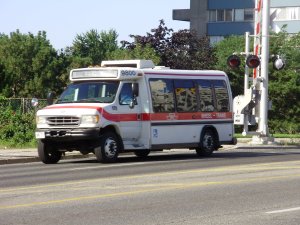In addition to the private non-emergency medical transportation businesses we’ve been talking about, there are actually public brokerages as well. The difference here is that the public brokerages are publicly owned. In other words, it’s tax payer dollars that fund them and they work for the government, usually on a state or local level. There are a few differences between public and private brokerages that we should go over so you can get a better understanding of how they work and differ from one another.
While public non-emergency medical transportation brokerages may sound more convenient because they can be more easily coordinated within the big picture of public transportation, there are some issues that must be dealt with. One of which is the fact that the brokerage must have its own separate budget and budget management team. This makes properly handling the employees of the non-emergency medical transportation company a complicated matter. In some cases special waivers are created to allow the employees to operate with minimal fuss, though this usually applies to rural areas in which private brokerage models are unavailable. The upside to public brokerages is that they are essentially “free” meaning there is no out of pocket expense for them.
The private brokerage model for non-emergency medical transportation is much simpler than the public model. The trade-off here is that the fees are going to be higher. That said, even though more money is spent it still represents an investment that pays off up to 1100% in the long run as we previously went over. It should be mentioned though that these fees are passed on to the consumer (the person using the transportation) in one way or another, which can be an issue for some.
It should also be mentioned that different areas of the US tend to have a preference for different brokerage styles. Many opt for a mix of both private and public brokerages depending on the specific area. For example, in rural areas of a state the public  brokerage model makes the most sense while in densely populated cities a private brokerage would be more beneficial. This mixed approach allows people who need non-emergency medical transportation the most to get the service in a way that is most convenient for them, for the businesses who hire these services, and for the state itself.
brokerage model makes the most sense while in densely populated cities a private brokerage would be more beneficial. This mixed approach allows people who need non-emergency medical transportation the most to get the service in a way that is most convenient for them, for the businesses who hire these services, and for the state itself.
Despite the fact that the mixed approach seems to be a cure-all for this situation, there are other innovative non-emergency medical transportation management models arising that hold great promise. Once such model is the “managed care” option. This system places the responsibility for providing non-emergency medical transportation on the care provider and/or insurance company depending on the situation. The state then offers a capitated payment based on a variety of factors designed to encourage efficient spending. In some cases there are also penalties for mistakes and poor service on the part of the care providers and insurance companies as well.
With the non-emergency medical transportation industry growing in response to the growing need for it, state and local governments will have to find new ways to implement these services. While there is still a debate over public vs. private models, new models like the managed care model are becoming more common. In the end, the non-emergency medical transportation industry seems to have a bright future ahead of it.
